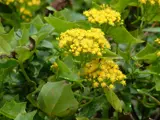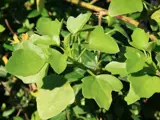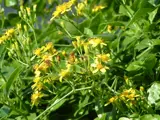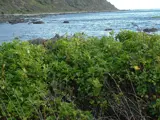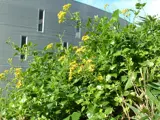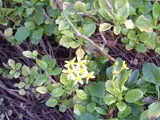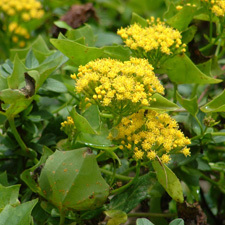 Cape ivy
Cape ivy
Common name: Cape ivy
Botanical name: Senecio angulatus
Management programme: Sustained control - Rule 5a applies
Originally from South Africa, Cape ivy was introduced to New Zealand as an ornamental plant and was recorded as naturalised in 1940.
Why is it a pest?
- Produces many long-lived seeds that are dispersed a long way from parent plants via wind.
- Layering stems smother ground and low-growing plants. Forms dense, long-lived mats that prevent the establishment of native plant seedlings.
- Tolerates salt, wind, drought, damage and semi-shade.
Where is it found?
Coastal, rocky areas, cliffs, bush edges, regenerating lowland forests and inshore islands.
What does it look like?
- Scrambling perennial, often forming a dense tangled shrub, with wiry woody stems that are sparingly branched.
- Very fleshy, leathery leaves that have 1-3 coarse serrations on each side, the uppermost leaves are smaller, narrower and occasionally smooth edged.
- Dense clusters of yellow, ragwort-like flowers (March to August) are followed by fluffy seeds.
What are the rules?
Sustained control
Sustained Control pests are well established in the region and preventing the spread is no longer a realistic objective. Management focuses on reducing general impacts of the pest. Landowners/occupiers are responsible for the control of these pest species on their land. Council may enforce control.
Under rule 5a of the RPMP landowners/occupiers must destroy this pest if required by a written direction from an authorised person unless a property specific pest management agreement has been agreed and signed between the occupier and the Council.
Criteria to meet Rule 5A include when the species is being actively managed by council, other agency and or community group, on an adjacent property. See the Regional Pest Management Plan 2020-2030 rules for Sustained control pests for more information.
How do you get rid of it?
- Hand-pull (all year) – dispose at refuse station, burn or deep bury
- Dig-out (all year) – dispose at refuse station, burn or deep bury
- Spraying (spring – summer)
CAUTION: When using any herbicide or pesticide, PLEASE READ THE LABEL THOROUGHLY to ensure that all instructions and directions for the purchase, use and storage of the product, are followed and adhered to.
Read more on pest control advice, information and regulations.
Images

